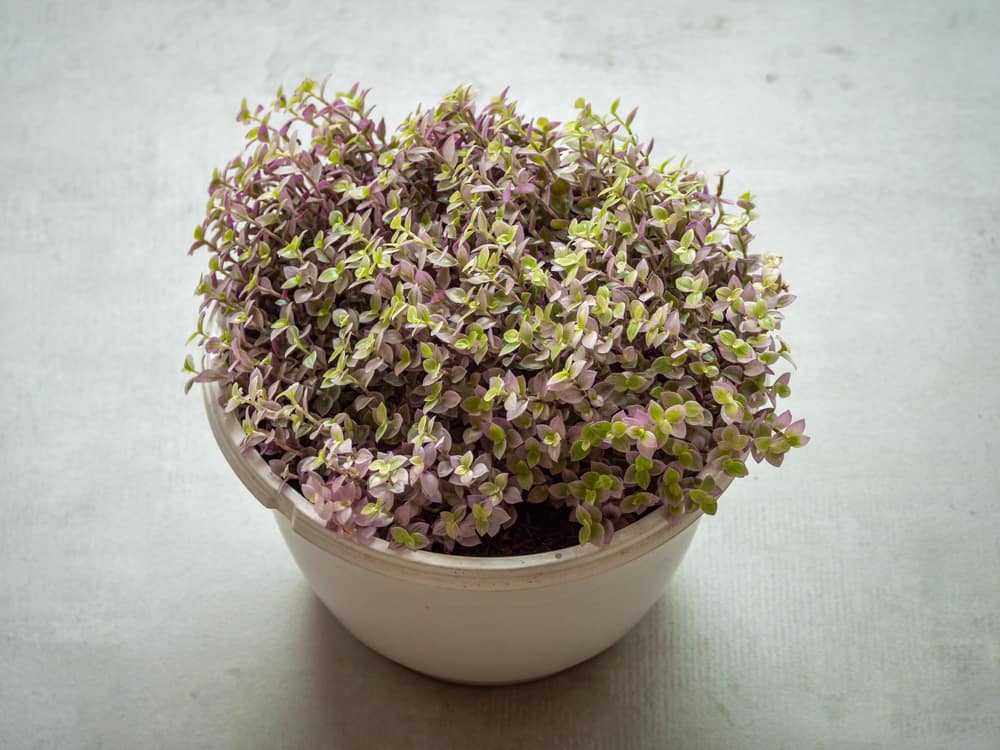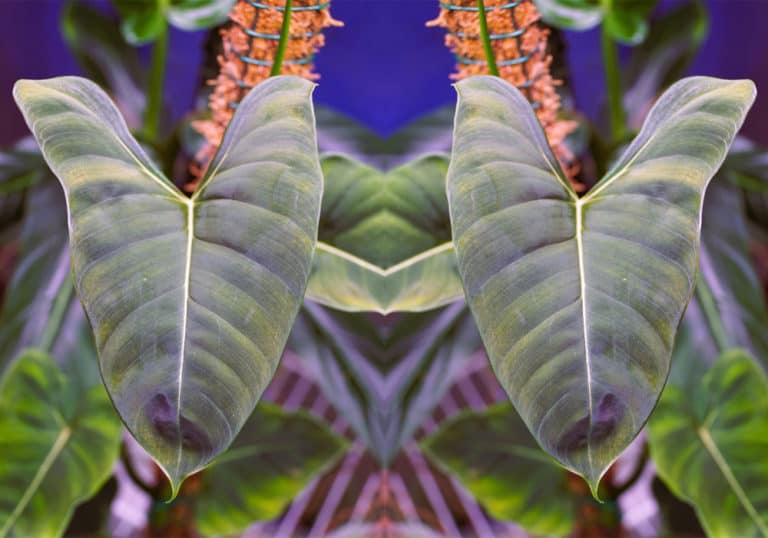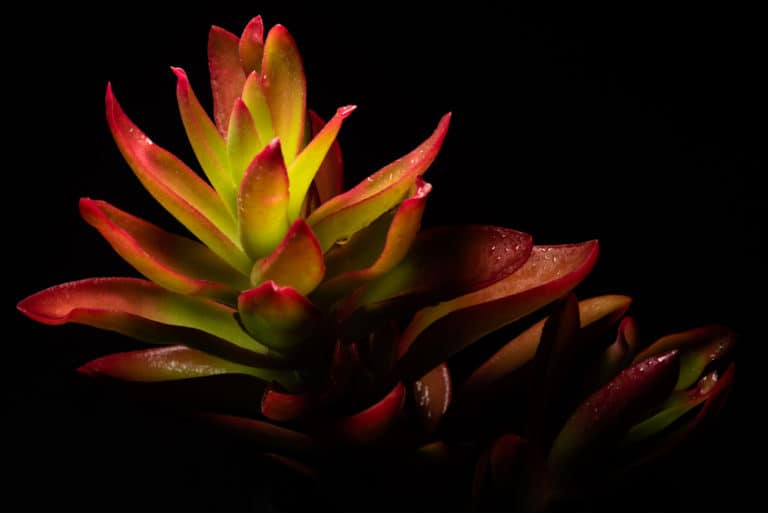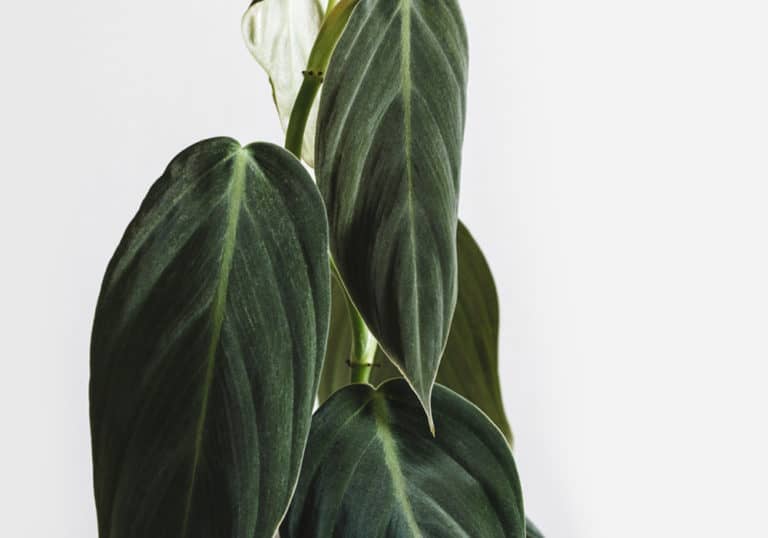Callisia Repens ‘Turtle Vine’ Care Guide (2024)

Some ground cover species are quite stunning, they’d make a good indoor plant. This Callisia repens plant is among them. Typically, it’s a low-growing creeping succulent that covers the shrublands in tropical and warm temperate regions. But don’t underestimate, ‘cause when potted or hanged, this grass-looking plant will surprise you.
Plant Profile
Common Name: Creeping Basketplant, Turtle Vine, Bolivian Jew
Scientific Name: Callisia repens
Type: Low growing succulent
Origin: Mexico, Central America, South America, and the West Indies
Habitat: Riparian areas, secondary forests, and shrublands in tropical and warm temperate regions
Size: 4 inches (10 cm) tall
Toxicity: Non-toxic to humans and pets
Colors: Bright green leaves
Blooms: Small, white flower clusters
Plant Care
Light: Bright, indirect light
Watering: Medium to high
Temperature: 10 to 15 °C (50 to 59 °F)
USDA Zone: 10a to 11b
Air humidity: Average humidity
Soil pH: acidic (5 to 6 pH)
Fertilizing: Apply liquid fertilizer every 10 to 14 days during summer
Propagation: Stem cuttings, seeds
Re-Potting: Every year
Pruning: Pinching off of stem tips
What’s Unique About Callisia repens?
Callisia repens plant is a desirable ornamental foliage. A native of Mexico, Central America, South America, and the West Indies, this herbaceous plant produces runners or stolons. Once planted in the ground, they could easily spread and form a mat groundcover. You’d easily find them growing in riparian areas, secondary forests, and shrublands in tropical and warm temperate regions.
Within this species, a cultivar especially known as Callisia repens ‘Pink lady’, is utterly famous for its striped green and pink leaves. Creeping Basketplant, Turtle Vine, Bolivian Jew, and Chain plant are just a few common names referring to this species.
Appearance
There’s a reason why one of Callisia repens common names is termed as pink lady. One look at the plant and you’ll surely know why. The leaves are obviously showing a shade of pink stripes on its surface. It’s low-growing, compact, and creeping in nature, a simple yet nice-looking ornamental.
Foliage
You’ll never go wrong if you choose this creeping basket plant for indoor ornamentals. The foliage of Callisia repens is an eye catcher. It has small, ovate, waxy leaves that can reach a size of 2.5 cm (1 inch). Each leaf appears opposite another.
The leaves of the pink vine plant are variegated. It comes with a combination of light pink, green, and white or cream. You’ll easily notice the stripes on the leaf’s surface. When you flip each leaf, you’ll see a burgundy color on its back. Such a stunning combination, right? It’ll surely add a colorful touch to the usual green foliage.
Flowering
A pink lady plant isn’t only all foliage. It also produces its own small, white flowers that appear in clusters. If from afar, these tiny blooms can easily escape your notice. That’s because they’re relatively tiny in size. But if you look closely, you can definitely see those cute blooms.
If you wish to observe the Callisia repens flowering, wait for the summer and autumn seasons. These are the periods when the blooms appear. A good lighting condition throughout the plant’s growing phase will help them produce flowers in season. So, make sure to provide the best growing conditions possible.
Size and Growth
If you’re curious about the Callisia repens growth rate, then remember that this one grows fast. They can easily outgrow their own pot, especially a small one. When in ground, they could spread and cover the bare spaces in just a short period of time. In fact, in some areas, Callisia repens are considered invasive.
But even when this plant is fast-growing, it remains compact and short. Its maximum size could reach only up to 4 inches (10 cm) tall. Even when they creep, they remain close to the ground. Since the size of Callisia repens is small, it’s the plant’s spread that you should manage.
Fragrance
There’s nothing much to expect when it comes to Callisia repens fragrance. All parts of it are odorless. So, don’t expect the plant to emit a fragrant odor. They won’t give you that kind of treat. But of course, this shouldn’t disappoint you. The plant is still gorgeous with or without the fragrance. So for now, enjoy what your plant offers.
The Callisia genus, however, has a species under it that produces fragrant flowers. This plant is known as Callisia fragrans. Well, the name obviously says it all. It also produces a cluster of tiny, white flowers from a long stalk. They’re also a lovely plant to add to your Callisia repens plants.
Toxicity
One would be lucky to grow Callisia repens if they have pets and kids at home. The plant is not considered toxic to either of these two. If you’re looking for an ornamental that’s friendly and safe to one’s health, then, this one surely fits the bill. But still, there are a few cautions to remember.
For Humans
Although we have eliminated Callisia repens toxicity in our list to worry about, we recommend that you still be careful. The plant has fancy colors and it could easily invite the attention of your kids. This plant is not edible so try to guard when your children are around. If ingested in high amounts, this could be poisonous.
Since the Callisia repens shape is fitted for hanging, you can just put it in a basket and hang in a well-lit location. This way, you’re protecting your kids as well as the plant itself. You wouldn’t want to ruin both, would you?
For Pets
You should also be wary if you have pets that are quite naughty. They, too, can easily play with your Callisia repens succulent. Not only will it leave your plant in chaos after, but, it could potentially poison your fur babies as well. That, if they manage to eat a handful of its leaves.
So to avoid these things, always provide a safe space for both the pets and the plants. Place it somewhere they can’t easily reach. Or, make sure you are around when your pets are on the loose. You can also train your pets not to touch your plants.
Suggested Uses
Because of Callisia repens appearance, you’d find no trouble using it as a design element. The plant perfectly suits an outdoor landscape as ground cover. Instead of using the usual green foliage, you can use this pink lady as an alternative. If you like hanging plants, this ornamental will als fit. Afterall, it’s called a creeping basketplant for a reason.
For those who like to bring this indoors, that’s totally a great idea. You could plant this one in pots as well. There are certainly many ways to have your Callisia repens add beauty to your garden. Just be creative.
Callisia repens Care
Now, we move on to Callisia repens care and maintenance requirements. The good thing is that this houseplant is definitely easy to manage. It won’t give you much trouble. Nevertheless, there still are specific growing conditions that this plant would prefer. Following is a complete guide for you to follow.
Light
When it comes to Callisia repens light requirements, the best condition leans toward bright but indirect light. If you’re planning to put it indoors, you’d have to ensure a good source of light whether natural or artificial. An east-facing window would be a great location. You could just add a sheer curtain to serve as a protective barrier when light intensity gets too strong.
Outside, the plant could tolerate direct light but not too intensely. So, it would be best to plant it under partial shade. Too much exposure to sun could lead to fading colors of the variegated leaves of the Callisia repens ‘Pink panther’.
Watering
This plant loves to have consistently moist soil. Meaning to say, you have to devote yourself to regular watering of Callisia repens. You could check this by lifting the pot. When the container feels light, it’s a sign that you should add water. Otherwise, you wait for more days to pass.
You also have to look at the condition of the foliage. If they’re dehydrated, the inner leaves will shed. You’ll also notice browning of the leaf tips. If this happens, you could employ bottom up watering. Place the pot in a bowl of water so it absorbs the moisture from below. Remove the pot once the soil is saturated.
Temperature
The preferable Callisia repens temperature should range between 10 to 15 °C (50 to 59 °F). The plant loves a warm environment. It isn’t frost hardy so you have to avoid exposing it under cold temperatures. A little low temperature that’s above freezing would be tolerable. Just make sure that this condition isn’t prolonged.
Summer seasons could be challenging if the heat gets really intense. Moisture loss would be faster than usual. This time, you could relocate your plant to a cooler location or one that is partly shaded.
In essence, anything extreme could hurt your pink lady plants. So, it pays to make adjustments when necessary.
Air Humidity
An average humidity level will suit the growing needs of a Callisia repens. So, there’s nothing to worry about if your plant is placed indoors. There’s no need for regular misting unless the environment gets too dry. In that case, adding extra moisture would be helpful.
Maintaining the ideal Callisia repens humidity will help it thrive and flourish. Proper humidity prevents the plant from losing too much water. Thus, it allows the plant’s pores to remain open enabling the absorption of carbon dioxide which is in turn needed for food production.
If the amount of moisture in the air is too low, plants will transpire at a higher rate, losing more water than necessary.
Soil
A standard potting mix will do for growing Callisia repens. Like with many other plant species, it is beneficial to have a mix that’s well aerated and well-draining. There must be a good combination of soil, organic materials and draining amendments. Our goal is to have a mix that drains excess moisture and provides enough air circulation so the roots will be healthy.
You can definitely buy a ready to use mix for your Callisia repens soil requirements. Remember to test the pH first. This plant will require a slightly acidic medium with a pH ranging from 5 to 6.
Fertilizing
Part of your care for Callisia repens is making sure it receives enough nutrients. Although this could be provided by the soil at the beginning, it can get depleted over time. So, there’s a need to provide additional sources through fertilization.
Luckily, this pink lady isn’t a heavy feeder. You can apply liquid fertilizer every 10 to 14 days during summer only. This is the time when the plant is very much active in its growth. Plus, the Callisia repens blooming is also starting during this season. The added nutrients will surely help carry out these important processes within the plant.
Propagation
There are two ways to propagate a pink lady. One is asexual which means that you use seeds. Another one is vegetative wherein you take stem cuttings to multiply your plant. Between these two, propagation of Callisia repens is best achieved vegetatively.
You can take healthy and mature stem cuttings and plant them in separate pots. Tend to it by providing enough water and partly shaded light until it develops its own roots. Once new growth is observed, you can transition the plant little by little to receive bright light.
You can also start from scratch using Callisia repens seeds.
Re-Potting
Re-potting Callisia repens will have to be done frequently. Remember this plant is a fast grower. You can do it once a year depending on the need. However, don’t be deceived by the massive growth of the foliage. Since it produces stolons, they may look bulky on the outside but still not pot-bound below.
In this case, pruning is much more appropriate than repotting. But, if you see the roots coming out of the pot, it’s definitely a call for soil and container replacement. Do not forget to trim off dead roots. And always use sterilized soil mix when repotting.
Pruning
Pruning Callisia repens is an important task especially since the plant has a creeping habit. To keep it compact, you could pinch off the tips of the stems, especially the mature ones. Another option is to thin out the plant by removing some of the stolons. It’s not ideal to have a plant that’s too dense because it will hinder light penetration and air circulation.
You can discard unhealthy stolons right away. But you can save the healthy ones for propagation. Don’t throw away the cut portions in vacant lots if you don’t want them to grow there. The pink lady can be invasive.
Callisia repens Common Problems
Although the plant is a resilient one, there are certain situations that you have to be careful of. Your pink lady is still a living organism after all. It has its own vulnerabilities. So to avoid such, let’s learn about potential Callisia repens problems that we may cross paths with in the future.
Pests
Among the Callisia repens pests are spider mites, mealybugs, aphids, whitefly, root mealybugs, scale & thrips. Such organisms could seriously damage the plant’s foliage and root system if they are left to multiply. It’s important that you have your plant in check from time to time. Remove such foreign organisms whenever spotted.
You can shoo away these pests by spraying diluted dishwashing soap on the foliage especially on the colonized areas. At times, water spray application will be enough. If they keep coming back, it’s time that you use insecticides to kill them completely. However, this situation rarely happens so you can relax.
Diseases
Leaf-spot disease, botrytis, powdery mildew & root rot are the identified Callisia repens diseases. They are caused by pathogens that have taken residence either in the plant parts or the soil. Certain environmental conditions could trigger their growth and reproduction. It could be due to excess moisture or overwatering.
These diseases could easily kill your pink lady. Thus, you have to be vigilant. Repot the plant right away if signs of root rot start to show. Withdraw watering for a certain period until the roots or the foliage healed. Apply fungicide whenever necessary. Also, make sure to isolate the plant while under treatment.
Growing Problems
Growing a pink lady plant should be an easy task. This ornamental is undemanding and would grow pretty much on its own. You’ll invest very little time and effort in taking care of it. It’s a beginner-friendly foliage plant.
Underwatering and overwatering are just the two things that you should not allow to happen. These two could significantly affect the health of your plant. They’ll get more susceptible to pests and diseases if they lack vigor.
To prevent such, make sure to provide the best growing conditions as much as possible. Plants are like humans, they get stressed and sick when the environment gets harsh.
FAQ
How do you care for Callisia repens?
This plant is quite resilient so you’d find less trouble caring for it. Just provide bright light, plenty of water and humidity as well as warm temperature.
Is Callisia repens a Tradescantia?
These two are related. The genus Callisia and Tradescantia are both under the Commelinaceae family. It’s no wonder that you’d find species under them with almost similar features.
Is Callisia repens an indoor plant?
While callisia pink lady is mostly planted outside as ground cover, it’s not impossible to raise this plant indoors. You can have it potted or hanged.
How do you keep Callisia repens pink?
The majority of the plant’s variegation becomes defined with exposure to bright light. This is also the same trick to keep your plant’s pink color more vibrant.
Why is my Callisia repens dying?
Factors like lack of light, underwatering or overwatering, temperature stress, pests and diseases could be a reason why Callisia repens is dying. You’ll identify which depending on the symptoms.
Can you propagate Callisia repens?
Yes, the easiest method to propagate this plant is by stem cuttings. In just 4 weeks, these newly propagated cuttings will grow their own roots.
Is Callisia repens toxic?
Apparently, this species is considered non-toxic to pets and humans. So, they’re perfectly safe to handle. However, it can be poisonous if ingested in high amounts.
How often should you water Callisia repens?
Water your lady plant regularly so the soil remains slightly moist. Adjust the watering schedule depending on the season. Provide enough water to avoid overwatering or underwatering.
Does Callisia repens like humidity?
For this plant, an average humidity level will do. There are times when you may have to do occasional misting if your indoor setting gets too dry.
How do you prune Callisia repens?
Pruning Callisia repens is quite an easy task. To keep this plant compact, you just have to constantly pinch off the tips of the stems.






